Marine Proteins and Peptides Biological Activities and Applications
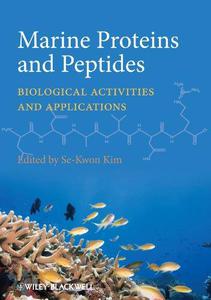
Marine Proteins and Peptides: Biological Activities and Applications By
2013 | 792 Pages | ISBN: 1118375068 | PDF | 7 MB
Food proteins and bioactive peptides play a vital role in the growth and development of the body's structural integrity and regulation, as well as having a variety of other functional properties. Land animal-derived food proteins such as collagen and gelatine carry risks of contamination (such as BSE). Marine-derived proteins, which can provide equivalents to collagen and gelatin without the associated risks, are becoming more popular among consumers because of their numerous health beneficial effects. Most marine-derived bioactive peptides are currently underutilized. While fish and shellfish are perhaps the most obvious sources of such proteins and peptides, there is also the potential for further development of proteins and peptides from sources like algae, sea cucumber and molluscs. Marine-derived proteins and peptides also have potential uses in novel products, with the possibility of wide commercialization in the food, beverage, pharmaceutical and cosmetic industries, as well as in other fields such as photography, textiles, leather, electronics, medicine and biotechnology.Marine Proteins and Peptides: Biological Activities and Applicationspresents an overview of the current status, future industrial perspectives and commercial trends of bioactive marine-derived proteins and peptides. Many of the industrial perspectives are drawn from the food industry, but the book also refers to the pharmaceutical and cosmetics industries. There have recently been significant advances in isolating functional ingredients from marine bio-resources and seafood by-products for use in these industries, but little has been published, creating a knowledge gap, particularly with regard to the isolation and purification processes. This book is the first to fill that gap.Marine Proteins and Peptides: Biological Activities and Applications is a valuable resource for researchers in marine biochemistry field as well as food industry managers interested in exploring novel techniques and knowledge on alternative food protein sources. It will become a standard reference book for researchers involved in developing marine bio-resources and seafood by-products for novel nutraceutical, cosmetics, and pharmaceutical applications. It will also appeal to managers and product developers in the food, pharmaceutical and cosmetics industries, particularly those looking to use marine-derived proteins and peptides as substitutes or replacements for unfashionable or outdated food components.Content: Chapter 1 Marine?derived Peptides: Development and Health Prospects (pages 1-3): Se?kwon Kim and Isuru WijesekaraChapter 2 Bioactive Proteins and Peptides from Macroalgae, Fish, Shellfish and Marine Processing Waste (pages 5-39): Padraigin A. Harnedy and Richard J. FitzgeraldChapter 3 Lectins with Varying Specificity and Biological Activity from Marine Bivalves (pages 41-68): Bishnu Pada Chatterjee and Mausumi AdhyaChapter 4 Digestive Enzymes from Marine Sources (pages 69-89): Juan Antonio Noriega Rodriguez, Ramiro Baeza Jimenez and Hugo Sergio GarciaChapter 5 Kamaboko Proteins as a Potential Source of Bioactive Substances (pages 91-110): Takeshi Nagai, Yasuhiro Tanoue, Norihisa Kai and Nobutaka SuzukiChapter 6 Biological Activities of Fish?protein Hydrolysates (pages 111-138): Irineu BatistaChapter 7 Biological Activities of Proteins and Marine?derived Peptides from Byproducts and Seaweeds (pages 139-165): Maria HayesChapter 8 Ability of Diverse Marine Invertebrate Lectins to Regulate Cell Functions (pages 167-184): Yasuhiro Ozeki, Sarkar M. A. Kawsar, Yuki Fujii, Yukiko Ogawa, Shigeki Sugawara, Imtiaj Hasan, Yasuhiro Koide, Hidetaro Yasumitsu and Robert A. KanalyChapter 9 Routes in Innate Immunity Evolution: Galectins and Rhamnose?binding Lectins in Ascidians (pages 185-205): Loriano Ballarin, Matteo Cammarata, Nicola Franchi and Nicolo ParrinelloChapter 10 Production of Lactobacilli Proteinases for the Manufacture of Bioactive Peptides: Part I-Upstream Processes (pages 207-229): Dominic Agyei, Ravichandra Potumarthi and Michael K. DanquahChapter 11 Production of Lactobacilli Proteinases for the Manufacture of Bioactive Peptides: Part II-Downstream Processes (pages 231-251): Dominic Agyei, Ravichandra Potumarthi and Michael K. DanquahChapter 12 Recovery of Proteins and their Biofunctionalities from Marine Algae (pages 253-269): You?Jin Jeon and Kalpa SamarakoonChapter 13 Fish Gelatin: A Versatile Ingredient for the Food and Pharmaceutical Industries (pages 271-295): Venkateshwarlu GudipatiChapter 14 Health Effects of Antioxidative and Antihypertensive Peptides from Marine Resources (pages 297-322): Ida?Johanne Jensen, Karl?Erik Eilertsen, Hanne K. M?hre, Edel O. Elvevoll and Rune LarsenChapter 15 Potential Novel Therapeutics: Some Biological Aspects of Marine?derived Bioactive Peptides (pages 323-349): Ruvini Liyanage, Barana C. Jayawardana and Suranga P. KodithuwakkuChapter 16 Hormone?like Peptides Obtained by Marine?protein Hydrolysis and Their Bioactivities (pages 351-367): Oscar Martinez?AlvarezChapter 17 Antimicrobial Activities of Marine Protein and Peptides (pages 369-383): Mingyong Zeng, Zunying Liu, Yuanhui Zhao and Shiyuan DongChapter 18 Production and Antioxidant Properties of Marine?derived Bioactive Peptides (pages 385-406): Tao Wang, Qiancheng Zhao and Qiukuan WangChapter 19 Marine Peptides and Proteins with Cytotoxic and Antitumoral Properties (pages 407-430): Joao Varela, Catarina Vizetto?Duarte, Luisa Custodio, Luisa Barreira and Fernando AlbericioChapter 20 ACE?inhibitory Activities of Marine Proteins and Peptides (pages 431-440): Mingyong Zeng, Yuanhui Zhao, Zunying Liu and Shiyuan DongChapter 21 Isolation and Biological Activities of Peptides from Marine Microalgae by Fermentation (pages 441-448): Bomi Ryu and Se?Kwon KimChapter 22 Antioxidant Activities of Marine Peptides from Fish and Shrimp (pages 449-466): Mingyong Zeng, Shiyuan Dong, Yuanhui Zhao and Zunying LiuChapter 23 Fish?elastin Hydrolysate: Development and Impact on the Skin and Blood Vessels (pages 467-486): Eri Shiratsuchi, Misako Nakaba, Yasutaka Shigemura, Michio Yamada and Kenji SatoChapter 24 Free Radical?scavenging Activity of Marine Proteins and Peptides (pages 487-497): Dai?Nghiep NgoChapter 25 Marine?derived Bioactive Peptides: Their Cardioprotective Activities and Potential Applications (pages 499-508): M. Vijayakumar, A. Noorlidah, Abdul Bakrudeen, Ali Ahmed, K. Priya and M. T. RosnaChapter 26 Biological Activities of Marine Bioactive Peptides (pages 509-521): Dai?Hung Ngo, Thanh?Sang Vo and Se?Kwon KimChapter 27 Shark Fin Cartilage: Uses, Extraction and Composition Analysis (pages 523-531): Chamila JayasingheChapter 28 Marine Bioactive Peptide Sources: Critical Points and the Potential for New Therapeutics (pages 533-544): Ratih Pangestuti and Se?Kwon KimChapter 29 Applications of Marine?derived Peptides and Proteins in the Food Industry (pages 545-587): D. M. Dilan Rasika, C. Senaka Ranadheera and Janak K. VidanarachchiChapter 30 Processing and Industrial Aspects of Fish?scale Collagen: A Biomaterials Perspective (pages 589-629): Santanu Dhara, Pallab Datta, Pallabi Pal and Soumi Dey SarkarChapter 31 Properties, Biological Advantages and Industrial Significance of Marine Peptides (pages 631-640): Abdul Bakrudeen Ali Ahmed, M. Vijayakumar, R. Pallela, N. Abdullah and R. M. TahaChapter 32 Muscle Proteins of Fish and Their Functions (pages 641-645): Byul?Nim Ahn and Se?Kwon KimChapter 33 Marine?derived Collagen: Biological Activity and Application (pages 647-665): W. M. Niluni Methsala Wijesundara and Buddika O. MalaweeraChapter 34 Marine Antifreeze Proteins: Types, Functions and Applications (pages 667-694): Sung Gu Lee, Jun Hyuck Lee, Sung?Ho Kang and Hak Jun KimChapter 35 Antimicrobial Peptides in Marine Mollusks and their Potential Applications (pages 695-707): Mahanama De ZoysaChapter 36 Protein Hydrolysates and Bioactive Peptides from Seafood and Crustacean Waste: Their Extraction, Bioactive Properties and Industrial Perspectives (pages 709-735): Anil Kumar Anal, Athapol Noomhorm and Punchira VongsawasdiChapter 37 Production and Health Effects of Peptides from Fish Proteins (pages 737-751): Mahinda Senevirathne and Se?Kwon Kim


![S.T.A.L.K.E.R. 2 / STALKER 2: Heart of Chornobyl - Ultimate Edition (2024) [+UPDATE 23.12.2024 - v1.1.3] ElAmigos / Polska wersja językowa](https://i.postimg.cc/Zqd8RWGY/UZG8PBE.jpg)



































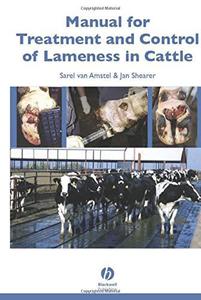

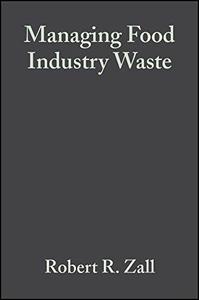
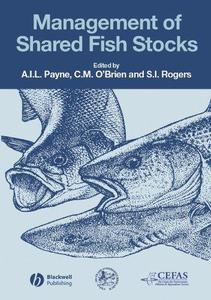
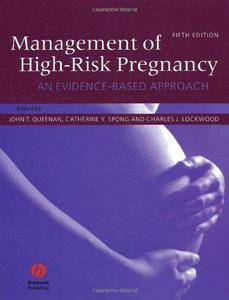
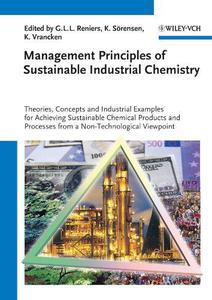
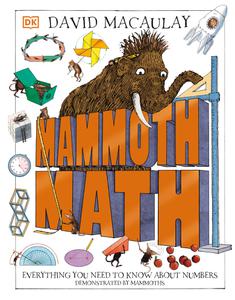
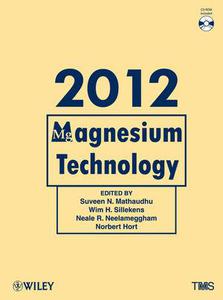
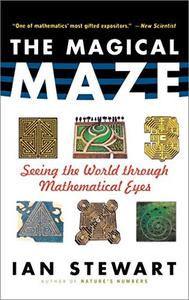







![David Gilmour - Luck and Strange (2024) [FLAC]](https://i.imgur.com/everaBc.jpeg)
![Męskie Granie Orkiestra - Męskie Granie 2024 (2024) [FLAC]](https://i.imgur.com/FAyOxrM.jpeg)
![The Rolling Stones - Hackney Diamonds (2023) [FLAC]](https://i.imgur.com/wCkyyUN.jpg)
![Lady Gaga - Harlequin (2024) [FLAC]](https://i.imgur.com/dcgIA8D.jpeg)
![Natalia Kukulska - Dobrostan (2024) [FLAC]](https://i.imgur.com/bdljG3O.jpeg)
![Kaśka Sochacka - Ta druga (2024) [FLAC]](https://i.imgur.com/hORQKvn.jpeg)
![Kuba Sienkiewicz - Pani Bóg (2024) [FLAC]](https://i.imgur.com/qijCx8Z.jpeg)
![Lanberry - Heca (2024) [FLAC]](https://i.imgur.com/8P7QfeR.jpeg)
![Sara James - PLAYHOUSE (2024) [FLAC]](https://i.imgur.com/m4f8OKg.jpeg)
![Grzegorz Hyży - EPILOG (2024) [FLAC]](https://i.imgur.com/8DA2sBr.jpeg)
![Myslovitz - WIECZORAMI CHŁOPCY WYCHODZĄ NA ULICE (2024) [FLAC]](https://i.imgur.com/l9mMtIG.jpeg)
![Krzysztof Zalewski - ZGŁOWY (2024) [FLAC]](https://i.imgur.com/vh48RAc.jpeg)
![Krzysztof Cugowski - Wiek to tylko liczba (2024) [FLAC]](https://i.imgur.com/SBzgqe2.jpeg)
![Nosowska - Kasia i Błażej (2024) [FLAC]](https://i.imgur.com/mObvVXQ.jpeg)
![sanah - Pianinkowe Kaprysy (2024) [FLAC]](https://i.imgur.com/pVjjPAa.jpeg)
![Kwiat Jabłoni - Pokaz slajdów (2023) [FLAC]](https://i.imgur.com/diERHfZ.jpg)
![Robert Cichy - Spacer po Warszawie (2024) [FLAC]](https://i.imgur.com/ixleU9o.jpeg)
![Viki Gabor - Terminal 3 (2024) [FLAC]](https://i.imgur.com/Q1KCnDs.jpeg)
![Sanah - Kaprysy (2024) [FLAC]](https://i.imgur.com/71OZm4h.jpeg)
![Męskie Granie Orkiestra - Męskie Granie 2023 (2023) [FLAC]](https://i.imgur.com/U4YHo8d.jpg)




